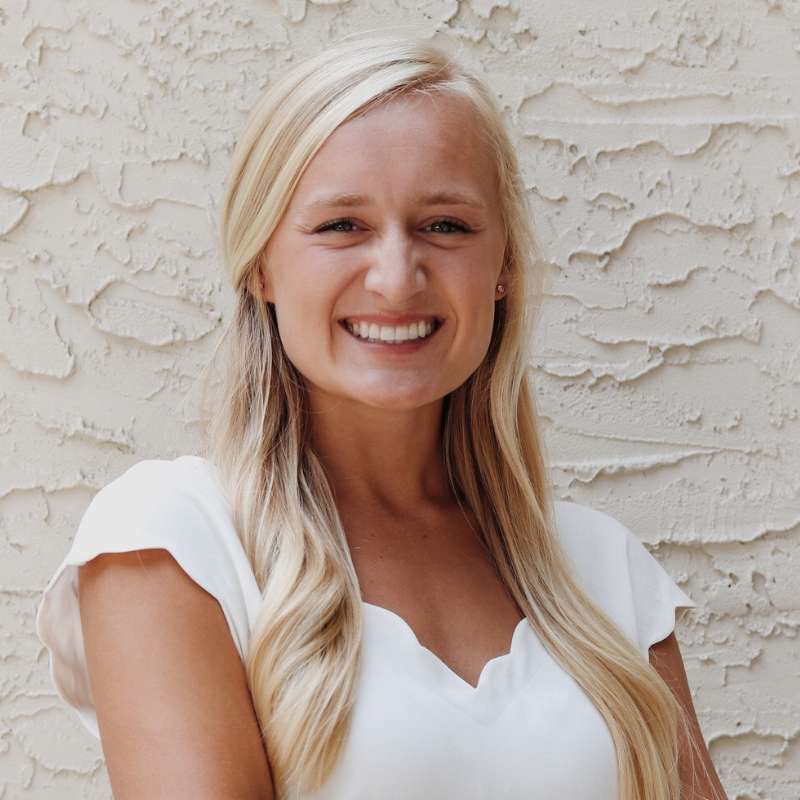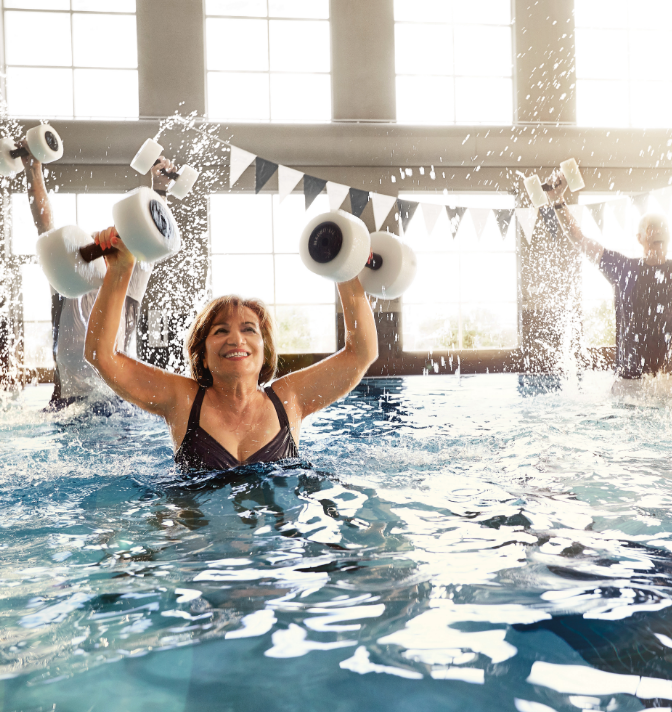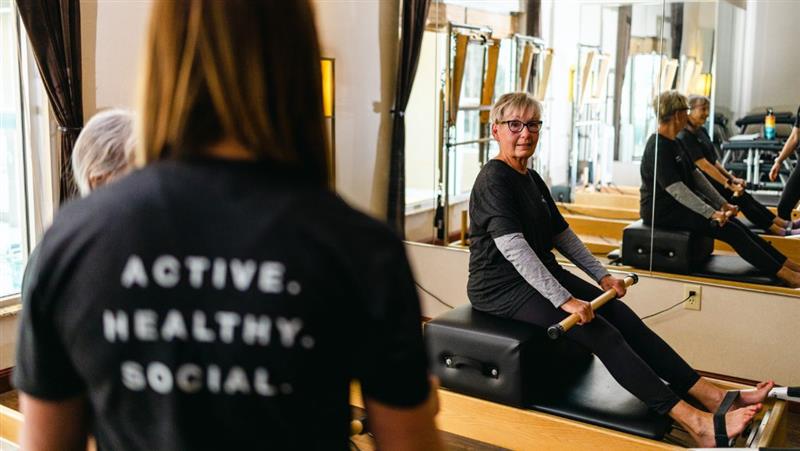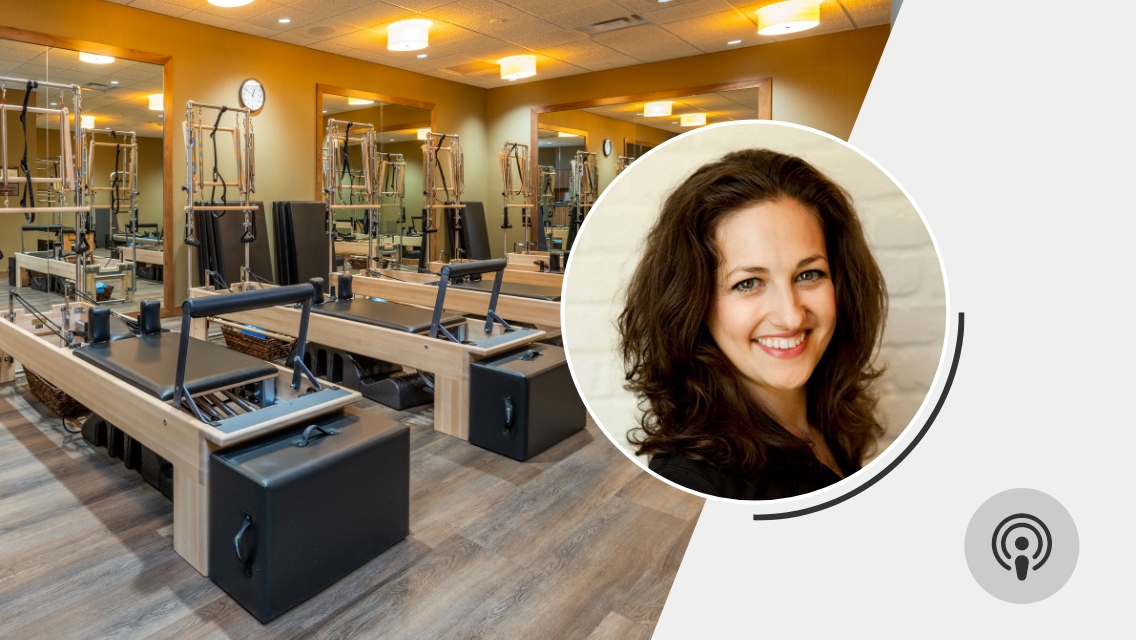We all tend to lose some bone density as we age. If that loss becomes substantial, we may develop osteoporosis, a disease that makes our bones porous, brittle, and prone to fracture. There are, however, proactive measures you can take to keep your bones healthy and strong. These range from making nourishing food choices and managing cortisol levels to incorporating strength-building exercises, such as Pilates, into your fitness regimen.
“Pilates is one of the best workouts someone can do as they age,” says Theresa Barone, Pilates operations manager at Life Time. “It’s a system of exercises designed to train the entire body from the core out.”
The technique offers notable functional-fitness benefits for aging bodies, Barone explains. It helps to reduce wear and tear on joints, relieve back pain, while improving balance and stamina. “Pilates also increases the body’s muscular strength,” she adds, “which, in turn, strengthens our bones, helping to combat some of those natural effects of aging.”
Life Time members participating in the ARORA program for active older adults can learn which Pilates movements best support bone strength by attending a complimentary ARORA Discover Pilates class.
Barone shares a few of her favorite exercises from the workshop so you can try them — and reap the benefits — from home.
Iso Abs 1
- Lay on your back and lift and bend your knees so your knees are above your stomach and your calves are about parallel to the floor.
- Place the palms of your hands on the tops of your thighs, just above your knees.
- Press the palms of your hands into your thighs as you push your thighs away from your body, until they’re pointing straight up to the ceiling. “Scoop” to draw your abs in and up and use the pressure from your hands to elongate your spine. Your knees should remain bent at about a 90-degree angle. Keep your palms connected to your thighs.
- Hold for three to five breaths. Relax, then repeat once or twice.
Flight
- Lay face down with your arms by your sides and your feet and legs about a fist-distance apart.
- “Scoop” your belly up and away from the mat, feeling your lower back lengthen. Press your pubic bone into the mat and feel your seat muscles engage.
- Using your upper-back muscles, lift your head and breastbone to raise your head, chest, and arms off the mat, keeping your neck long and arms strong.
- Lift your belly muscles farther away from the mat and up the front of your body. Hold for three seconds.
- Lengthen out through the crown of your head as you lower back down with control.
- Repeat three to five times.
Standing Towel Chest Stretch
- Stand tall with your feet and legs about a fist-distance apart. You should feel like your tail bone is reaching to the floor and the crown of your head is lengthened to the ceiling. “Scoop” your belly, drawing your abs up and in.
- Hold a towel behind your back with both of your hands, gripping so that your thumbs face each other and your pinky fingers are facing out.
- Spread your upper back wide and pull your hands away from each other, stretching the towel.
- While the towel is stretched and without changing your posture, reach your arms (and towel) backward away from your body. Do not round your upper back, collapse your chest inward, or bend at the elbows as you do this.
- Hold for five seconds, “scooping” your belly up to grow taller.
- Lower your hands back toward your body.
- Repeat three to five times.
Up and Down Side Kicks
- Lay on your side, keeping your body and spine straight. Elevate your head, using your bottom hand to support it. Stack your top leg on top of your bottom leg. Place your feet about a foot in front of your body so your hips are at an obtuse angle. Draw your abs in and up. Let your top hand press into the mat in front of your ribs.
- Without moving your pelvis, lift your top leg up toward the ceiling.
- Stretch your leg long as you return your top leg back down to meet your bottom leg.
- Repeat five to 10 times on each side.
Bird Dog
- Position yourself on all fours in a quadruped position (hands and knees directly under your shoulders and hips). Keep a long spine and “scoop” your belly in and up.
- Lift and extend one leg straight out behind you. Lift and extend your opposite arm straight out in front of you. Keep your elevated leg and arm long and lined up with your spine (ideally no higher or lower).
- Hold this position for three to five seconds. Try to grow longer from head to tail, holding your extended arm from your shoulder blade and your extended leg from your seat.
- Lower your hand and knee back down.
- Complete on the opposite side.
- Repeat five to 10 times on each side.





